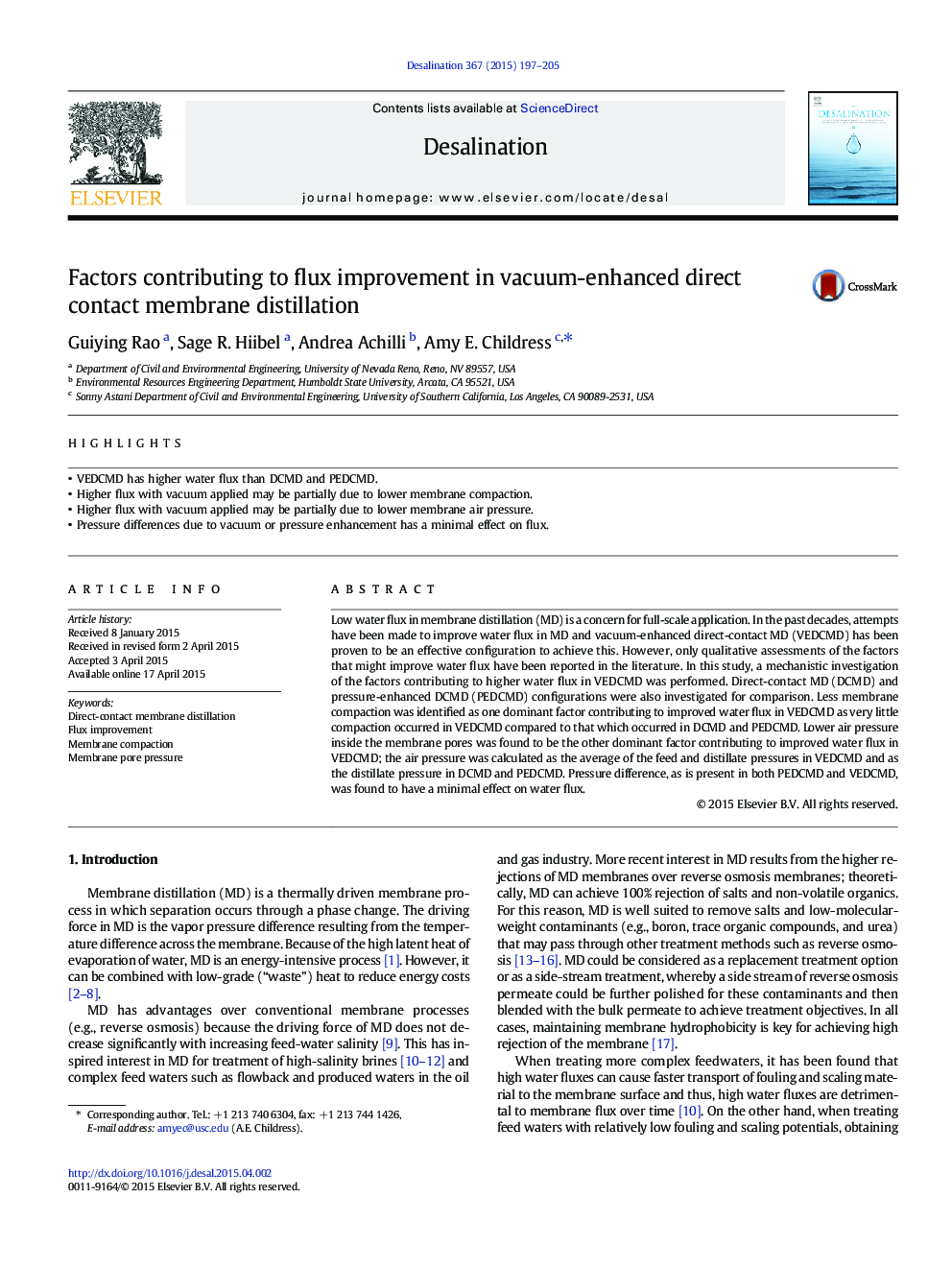| کد مقاله | کد نشریه | سال انتشار | مقاله انگلیسی | نسخه تمام متن |
|---|---|---|---|---|
| 623166 | 1455328 | 2015 | 9 صفحه PDF | دانلود رایگان |
• VEDCMD has higher water flux than DCMD and PEDCMD.
• Higher flux with vacuum applied may be partially due to lower membrane compaction.
• Higher flux with vacuum applied may be partially due to lower membrane air pressure.
• Pressure differences due to vacuum or pressure enhancement has a minimal effect on flux.
Low water flux in membrane distillation (MD) is a concern for full-scale application. In the past decades, attempts have been made to improve water flux in MD and vacuum-enhanced direct-contact MD (VEDCMD) has been proven to be an effective configuration to achieve this. However, only qualitative assessments of the factors that might improve water flux have been reported in the literature. In this study, a mechanistic investigation of the factors contributing to higher water flux in VEDCMD was performed. Direct-contact MD (DCMD) and pressure-enhanced DCMD (PEDCMD) configurations were also investigated for comparison. Less membrane compaction was identified as one dominant factor contributing to improved water flux in VEDCMD as very little compaction occurred in VEDCMD compared to that which occurred in DCMD and PEDCMD. Lower air pressure inside the membrane pores was found to be the other dominant factor contributing to improved water flux in VEDCMD; the air pressure was calculated as the average of the feed and distillate pressures in VEDCMD and as the distillate pressure in DCMD and PEDCMD. Pressure difference, as is present in both PEDCMD and VEDCMD, was found to have a minimal effect on water flux.
Journal: Desalination - Volume 367, 1 July 2015, Pages 197–205
